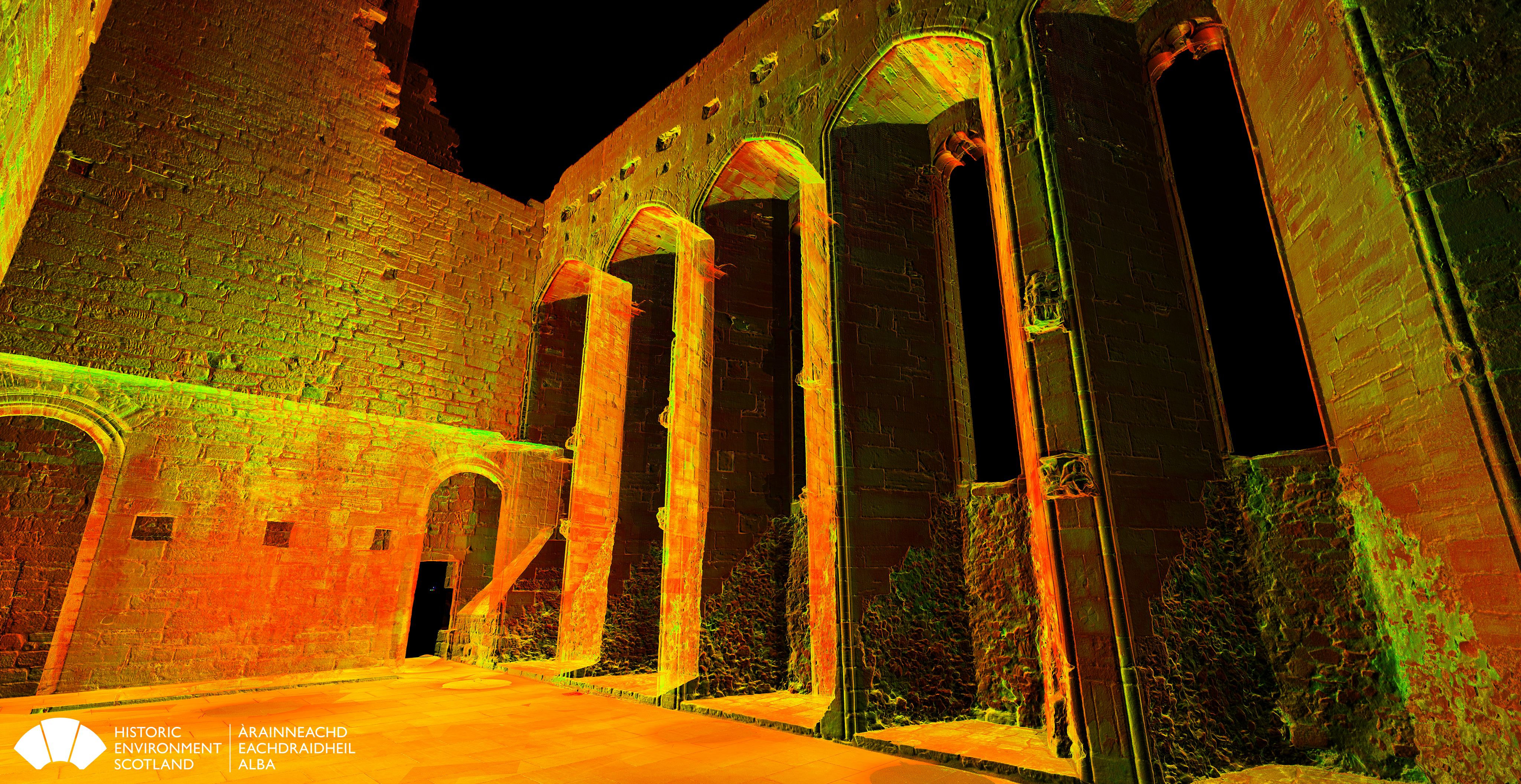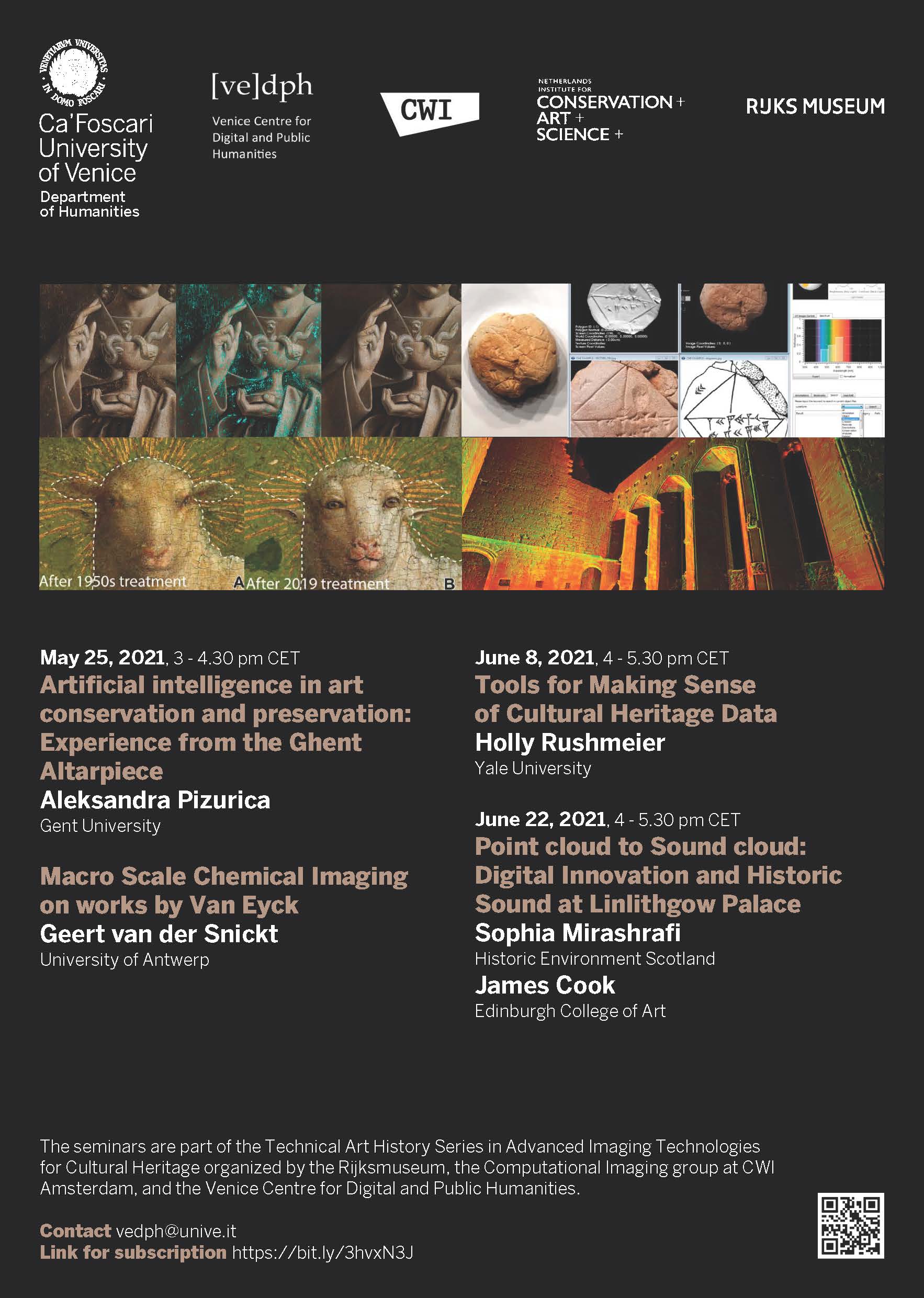

We would like to invite you to the seminar Point cloud to Sound cloud: Digital Innovation and Historic Sound at Linlithgow Palace. This is the final seminar in the Technical Art History Series: Digital Imaging Methods for Cultural Heritage.
Please join us for the first lecture on Tuesday June 22, at 16.00-17.30 hrs CET.
By scanning the QR code on the poster or by clicking on the button below, the registration form will open in your browser.
The Venice Center for Digital and Public Humanities, together with CWI Amsterdam and the Netherlands Institute for Conservation+ Art+ Science+, are organising a short series of lectures on object-based research, including virtual letter unfolding, digital art restoration, 3D modeling and software for the analysis of diverse data forms, with the aim to stimulate collaborations and scientific discussion on Cultural Heritage challenges in the digital world.
Speakers:
► Sophia Mirashrafi & James Cook – Point cloud to Sound cloud: Digital Innovation and Historic Sound at Linlithgow Palace
Abstract:
The Digital Documentation and Digital Innovation teams at Historic Environment Scotland (HES) work to capture and utilize 3D data for storytelling, accessibility, and interpretation. Starting from detailed laser scans and photogrammetry, the teams at HES can create everything from 3D models, animated y-throughs, scientific investigation, virtual tours, and more, using innovative digital methods to tell new stories about our past. A key case study of this kind of work is highlighted at Linlithgow Palace, the birthplace of Mary Queen of Scots. The Edinburgh College of Art, in collaboration with HES and the universities of Birmingham and Melbourne, conducted a cutting-edge project utilizing HES’ 3D scan of the chapel, pushing the boundaries of virtual reconstruction: recreating a sixteen-century concert, with the historic instruments, acoustic, and sound of 1512.
Bio:
Sophia Mirashrafi is the Digital Project Officer on the Digital Innovation and Digital Documentation team at Historic Environment Scotland, based at the Engine Shed in Stirling, Scotland. She holds an MSc in Digital Heritage from the University of York and an MA in Medieval History and Archaeology from the University of St Andrews. Currently she is working with the National Trust for Scotland on the digital documentation and investigation of Charles Rennie Mackintosh’s Hill House in Helensburgh, Scotland.
James Cook is a lecturer in Early Music at Edinburgh College of Art. After completing his doctorate on Fifteenth-Century English Mass Cycles, James held a number of short-term post-doctoral fellowships followed by a Postdoctoral Fellowship of the Society for Renaissance Studies, during which he worked on the apparent decline in interest in English music in the later fifteenth century. He works mainly on early music and is especially interested in music of the fourteenth to sixteenth centuries – the period that falls neatly between the Middle Ages and the Renaissance.
